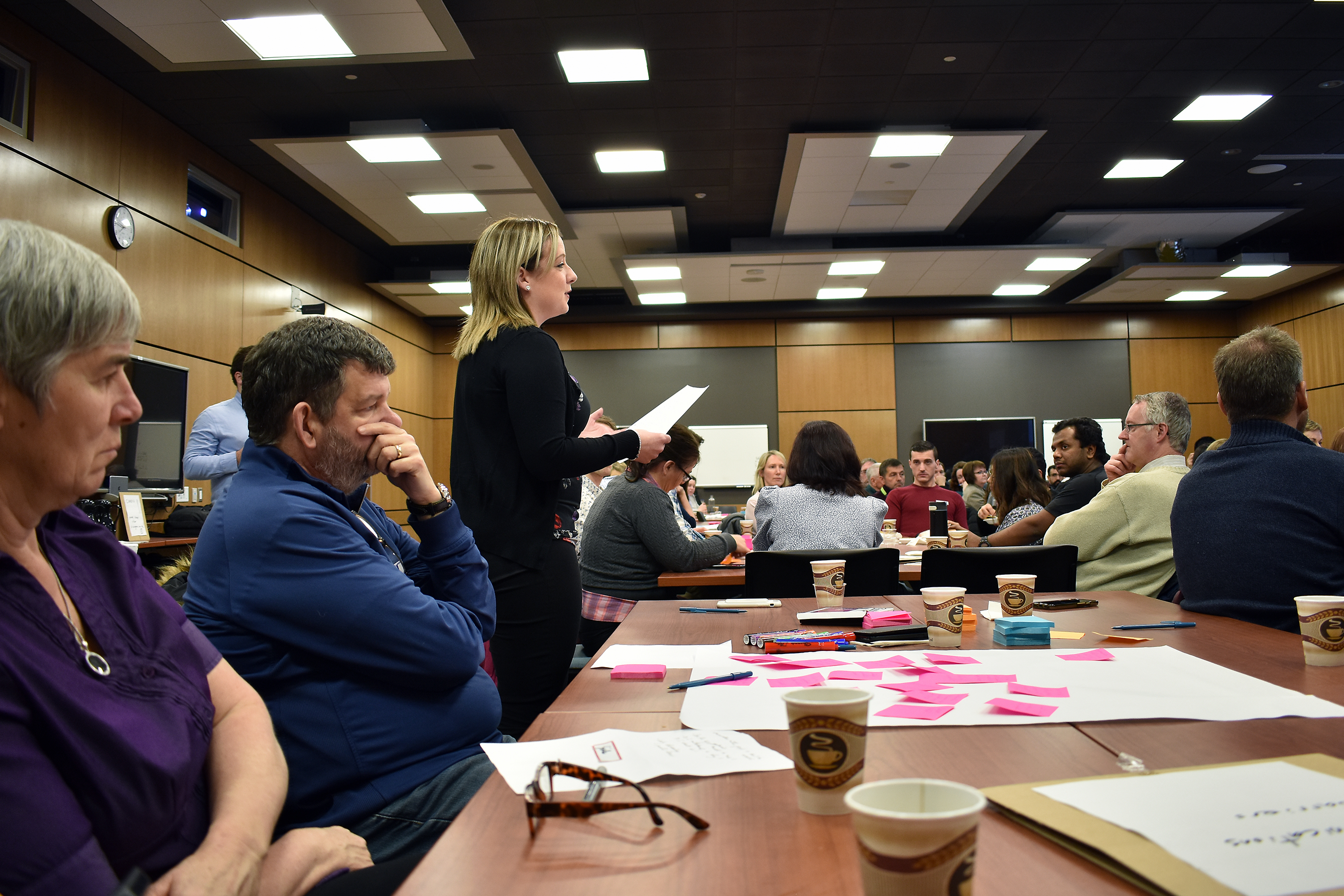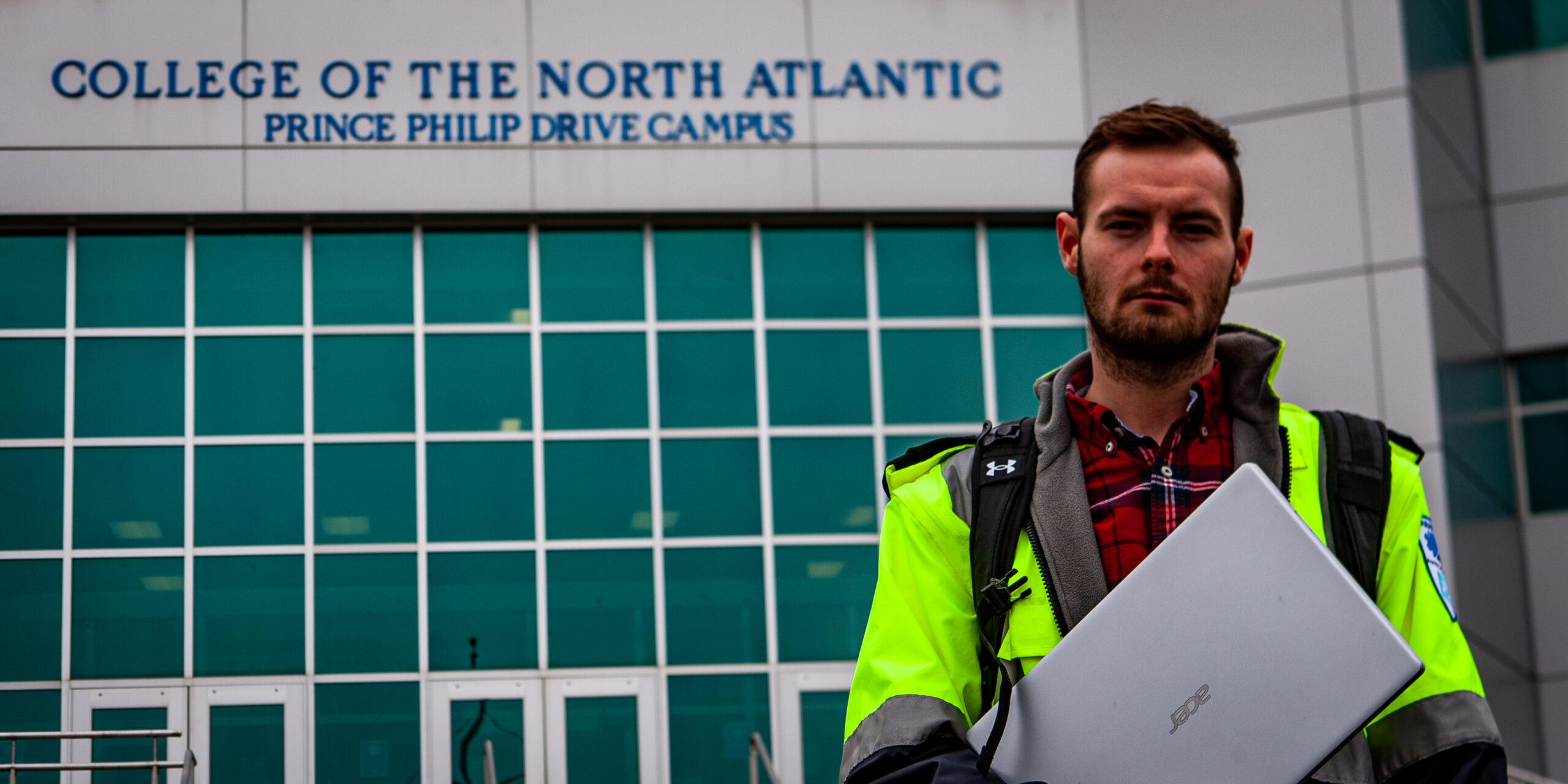Health authority asks for input from health professionals, tech experts and the public as it tries to cut down on no-shows.

Amy Fitzpatrick
Kicker
Some 97,000 people just aren’t showing up each year.
Eastern Health books approximately one million specialist appointments at various clinics each year for outpatients and more than 10 per cent are no-shows.
That’s lost hours, equipment sitting idle and unnecessarily long wait times for people that need those services. Patients are considered no-shows if they miss their appointments without providing notification at least 48 hours in advance. Eastern Health is trying to bring that rate down. Recently it invited health professionals, technology experts and the public to a Hacking Health Café event at Memorial University’s faculty of medicine. About 100 people showed up for the open-invitation forum seeking input on how to improve the health authority’s no-show rate.
Ron Johnson, Eastern Health’s vice-president and chief information officer, says they are trying to find a better way to deal with cancellations.
“We’re trying to engage with the people that know the most about it, which are the people that are going to the appointments, so we’re trying to learn from that,” said Johnson.
David Diamond, president and chief executive officer of Eastern Health, is familiar with the public’s frustration when it comes to wait times and using Canada Post to mail out appointment booking letters. Those letters can be mailed out anywhere from a few weeks to several months or even further in advance of appointments.
“We think that’s basic technology that already is there, and we need to catch up with the rest of industry.”
International studies have shown a direct correlation between how far in advance appointments were booked and no-show rates. One study showed a nine per cent no-show rate for appointments booked two weeks in advance. For appointments booked six months in advance, no-shows increased to 38 per cent.
“We continue to hear from the public that if you can get your car booked for an appointment at the garage, or a dental appointment, or get your hair done and you can get notification via text or various social media, then why wouldn’t we be able to do that in health care?” said Diamond.

Well, it ends up that patients can, and they are, but it’s a bit more complicated than a local salon’s notification system.
The automated notification system pilot project began in 2016 with a phone-call reminder service for outpatient services with the highest number of no-shows. In February 2018, it was extended to offer the choice of receiving a phone call, email or text notification.
Diamond admits that putting such a system in place isn’t revolutionary, but a good first step.
“We think that’s basic technology that already is there, and we need to catch up with the rest of industry,” said Diamond. “But we hope that tonight (Hacking Health Café) might give us some ideas to allow us to be more sophisticated than that.”
According to Johnson the program has shown some success in lowering the no-show rate.
“We found it to be effective and have made a 50 per cent improvement – we were at 20 per cent and now we’re down to 10 per cent. We still have more improvements to make … works for some, but it’s not the panacea, which is why we had the Hacking Health event.”
“It’s hard to fix the airplane when you’re flying it and this airplane is always in flight.”
According to a phone survey conducted by Eastern Health, some reasons given for missed appointments include transportation issues, confusion on how to contact Eastern Health, parking problems, inconvenient appointments times and sometimes patients simply forget – especially when appointments are scheduled months in advance.
Some suggestions at the Hacking Health event included an Uber-type volunteer-operated driver service to get clients to their appointments and shuttle services to cut back on parking issues. A self-service booking system that allows patients to login and choose their appointment times or even choose the site of the appointment was also on the wish list. Patients would also like to see a central contact point to call, email or text to cancel or reschedule appointments.
Johnson acknowledges a zero per cent no-show rate may be impossible, but they are confident they can decrease the current rate by another two to three per cent or 20,000-30,000 appointments.
The new system is 70 per cent complete and should be available across all departments within a couple of years. Once complete, it will make it easier to incorporate other technology in the future.
“Health care is busy and we’re operational 24/7,” Johnson said. “It’s hard to fix the airplane when you’re flying it and this airplane is always in flight.”
This story was edited to correct the 10 per cent figure in the second paragraph.




The wait lines are a big concern for many people. This story is an interesting look at what is being done about it and why the system is still in place.